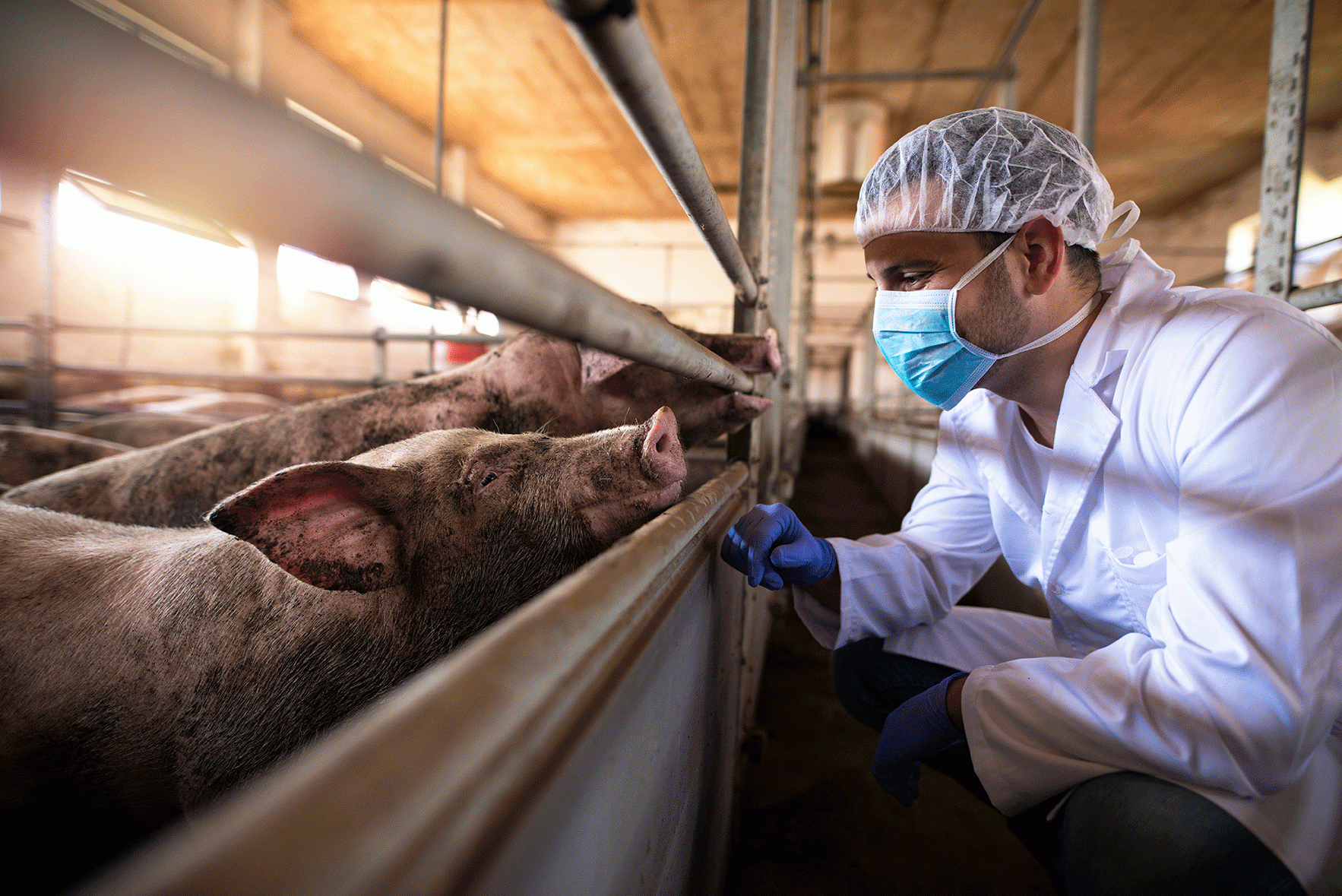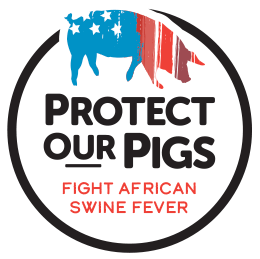As a veterinarian, you’re essential to helping pig farmers keep their herd healthy and defend against diseases like the highly contagious African swine fever. Because this viral pig disease has never been detected in the United States, it can be easy to become complacent. Getting all types of pig owners to know the upfront actions to take–and disease signs–is critical to protecting the herd and the U.S. food supply.
Your Role in Securing Our Swine
6 Key Prevention Steps
Protect the herd from African swine fever.
International travel and trade increase the health risks to the nation’s pig herd. Although people cannot get African swine fever, they can carry and spread the pig virus on clothing, shoes, equipment, and in other ways.

Step 1 Step 2 Step 3 Step 4 Step 5 Step 6
Download Prevention Steps
English (225.17 KB) Español (211.89 KB)

Step 6: Keep pigs away from wildlife.
Feral swine can carry African swine fever and other diseases. Pig farmers should prevent their herd from having any contact with feral swine. Make sure farmers store feed where wildlife cannot access and contaminate it.

Step 5: Clean and disinfect all equipment and vehicles entering or leaving your site.
Let your clients know that the virus can stay on vehicles and equipment, and how critical it is for them to clean and disinfect all equipment vehicles coming onto or exiting their sites.

Step 4: Keep pigs away from trash and prevent anyone eating in animal areas.
Swine should not eat from trash as it can be contaminated. African swine fever virus survives for extended periods in pork and pork meat products and can be a source of spread. Also, alert your clients about restricting all outside food products to a specific area of the facility away from animals.

Step 3: Wear clean coveralls and boots at each site.
As the virus can stay on clothing, this step limits disease spread for anyone moving among different sites. Farmers should be aware that all visitors must wear clean clothes and shoes at all pig production facilities and farms.

Step 2: Require workers and visitors to routinely wash hands or shower-in and shower-out.
Alert producers that employee entry and scheduled repairs are high-risk exposures for biosecurity. All individuals need to follow correct protocols and remove all clothing and accessories on a designated dirty side and dress only in laundered items on the clearly marked clean side. Handwashing and honoring clean/dirty lines are critical.

Step 1: Limit on-farm traffic.
Caution your clients to limit traffic as much as possible. Encourage them to keep detailed records of all people, vehicles, and equipment at their farm and all pig production facilities. Alert them to the importance of training and clearly communicating rules to workers and visitors, and being vigilant in enforcing enhanced biosecurity practices.
Biosecurity Basics: Tell Your Clients

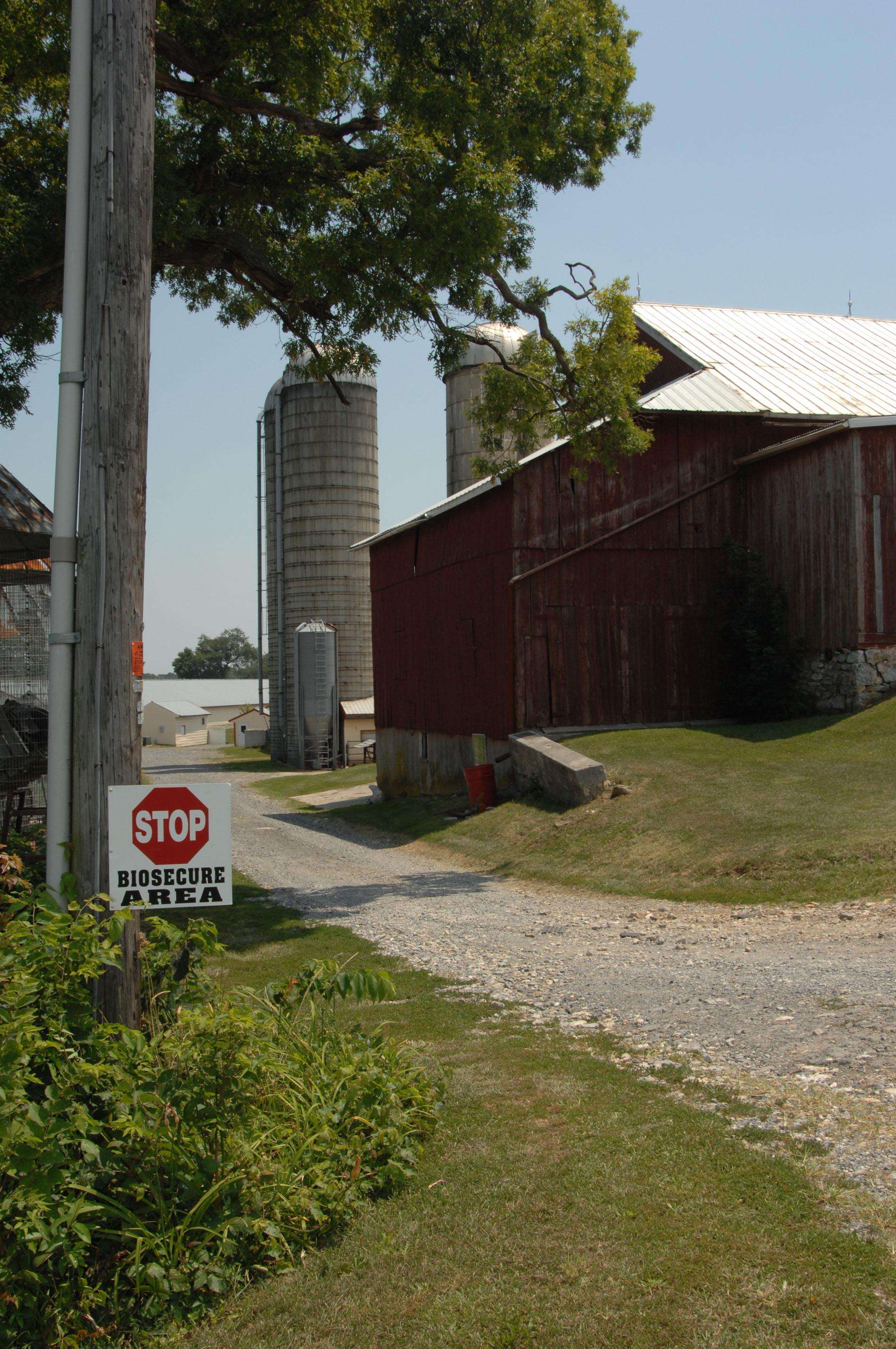
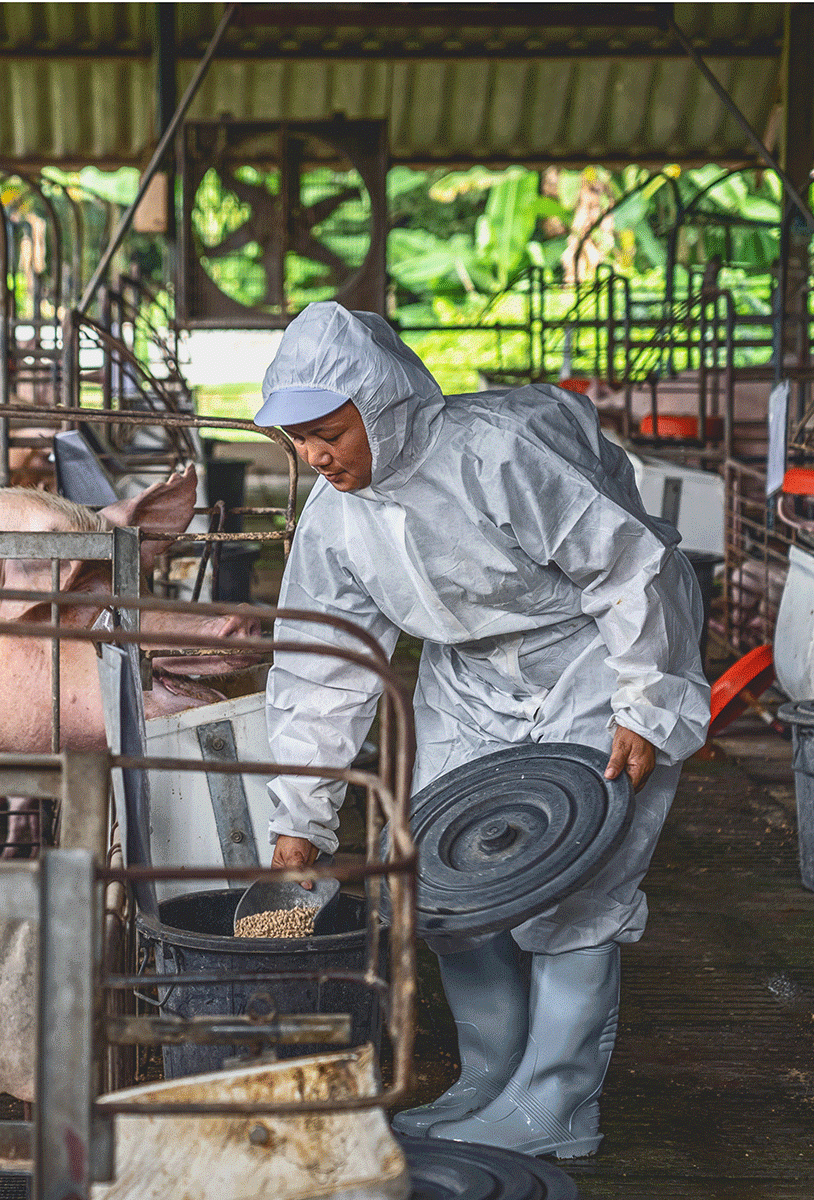
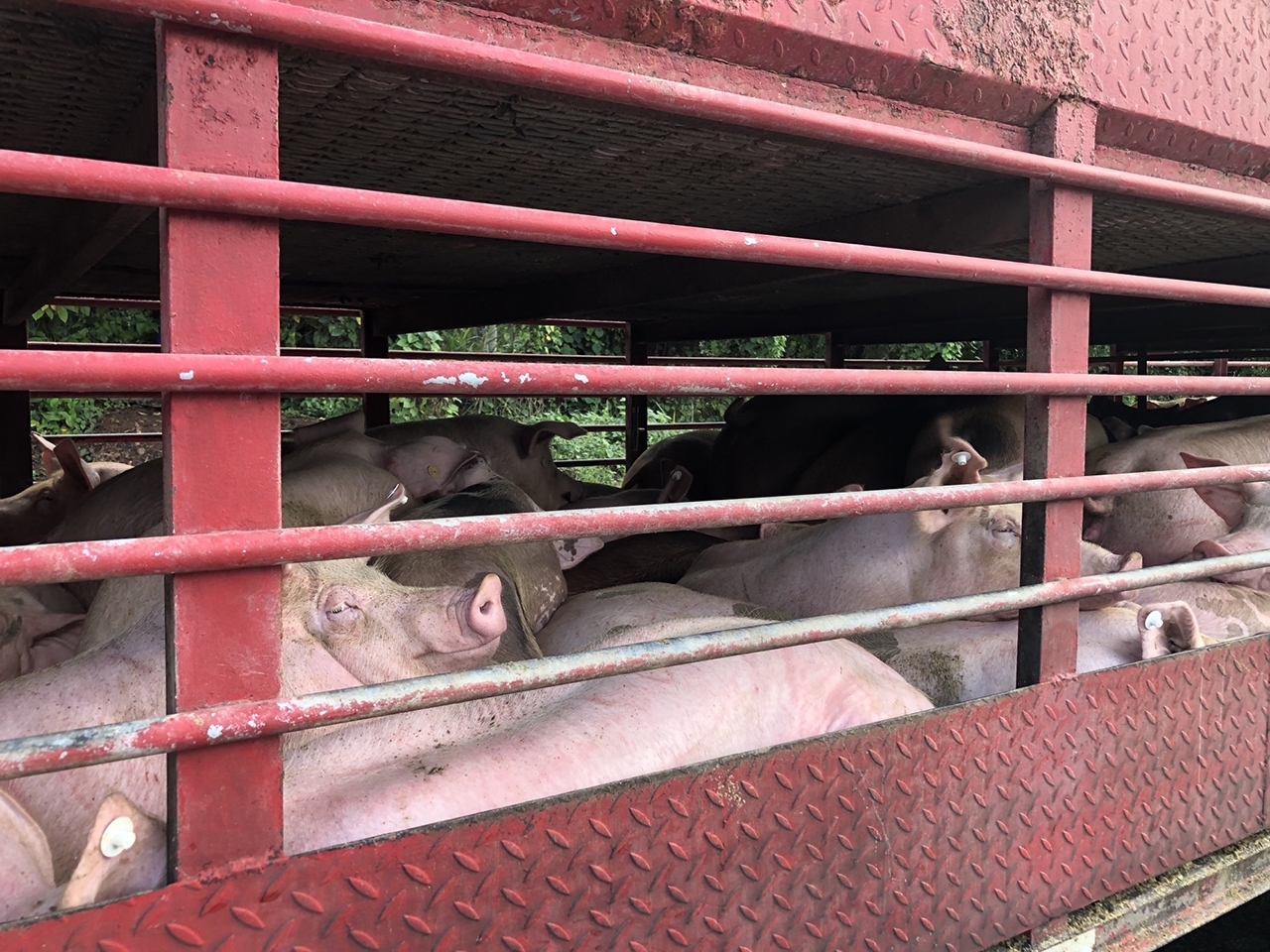
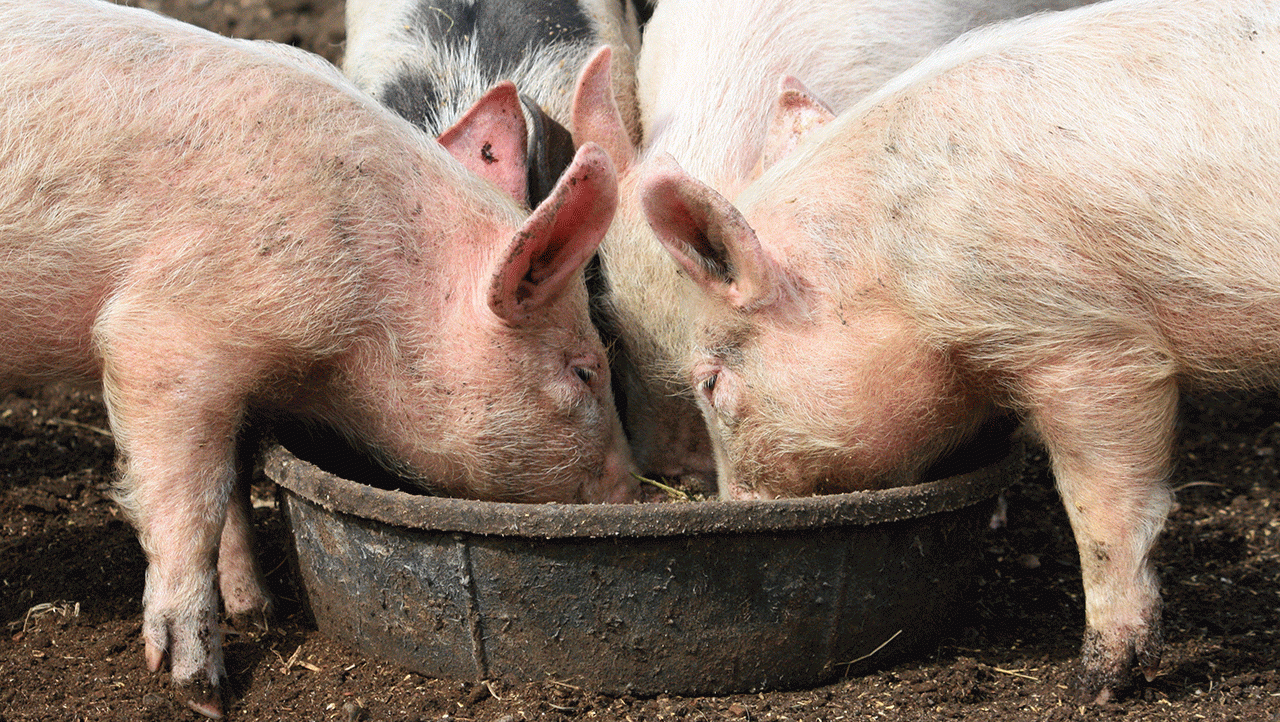
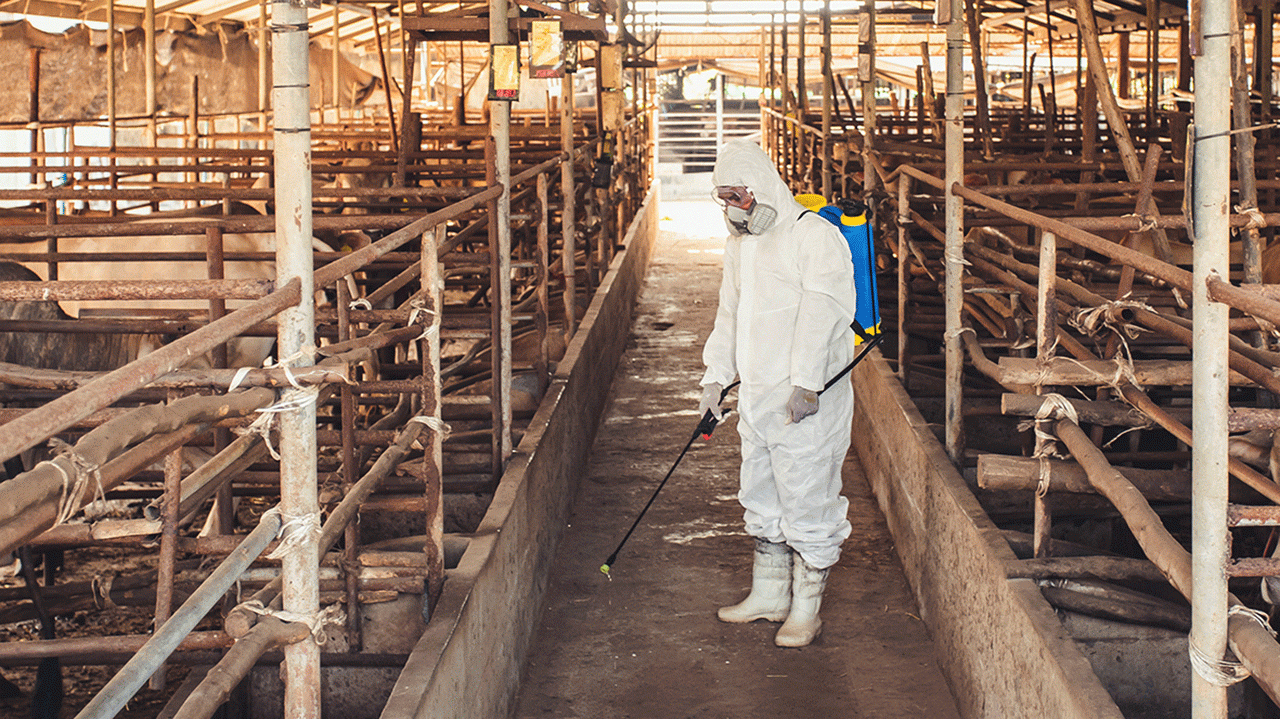
Update their biosecurity plan and implement an ongoing African swine fever training program for personnel.
Each site’s biosecurity manager is responsible for developing and updating an enhanced written biosecurity plan with the help of their herd veterinarian. This person is accountable for training and communicating biosecurity measures in a language each person who enters the site can understand. The biosecurity manager and essential personnel also need to be trained about biosecurity measures to keep the virus out.
Download Biosecurity Steps
English (1.89 MB) | Español (1.76 MB)
Restrict access to production sites.
Limit their site’s entry points and protect each with lockable gates. Lock buildings when no one is present. Establish a perimeter buffer area (PBA) to serve as an outer barrier around buildings to limit movement of the virus near animals. Designate a clearly marked parking area outside the PBA. People and vehicles moving through PBA access points must follow cleaning, disinfection, and other biosecurity measures. Producers should create one or more line of separation as a control boundary to prevent movement of the virus into animal areas.
Download Biosecurity Steps
English (1.89 MB) | Español (1.76 MB)
Enhance employee biosecurity practices.
Limit access to people who are essential to the production site. Everyone crossing the line of separation (LOS) arrives having showered and wearing clean clothing and footwear. All individuals crossing that line should sign an agreement to follow the rules. Require those crossing a LOS access point to complete an entry logbook, and the logbook is monitored, and information is maintained. All individuals crossing at designated areas follow biosecurity plan procedures.
Download Biosecurity Steps
English (1.89 MB) | Español (1.76 MB)
Ensure strict movement-of-animal protocols.
Pigs and semen, if applicable, come with documented and verified sources of having no foreign animal disease. No animals from a regulatory-controlled area can be introduced onto the site for at least seven days before moving any animals to another pork production site with animals. Work with your clients on a contingency plan for interrupted animal movement. Animals leaving the production site can only move in one direction across any line of separation at one time. Contaminated areas must be cleaned and disinfected.
Download Biosecurity Steps
English (1.89 MB) | Español (1.76 MB)
Prevent feed contamination and control wildlife, rodents, and flies.
Ensure that grain and feed are delivered, stored, mixed, and fed in ways to prevent contamination. Encourage farmers to clean up and dispose of feed spills immediately to prevent wildlife attention. Facilities should be designed to prevent all animals, including birds, from crossing into secure areas and contacting pigs. Everyone needs to work to support the documented rodent and fly control programs.
Download Biosecurity Steps
English (1.89 MB) | Español (1.76 MB)
Put in place proper carcass disposal and manure management practices.
Your clients need to dispose of dead animals to prevent the attention of wildlife, rodents, and other scavengers. Ensure rendering vehicles don’t enter the perimeter buffer area. Manure should be removed to prevent exposure of the herd to disease agents. Work with clients on a plan to store manure on-site if it cannot be moved off-site as a result of an outbreak.
Download Biosecurity Steps
English (1.89 MB) | Español (1.76 MB)






Report Any Signs

Immediately report animals with any signs to State or Federal animal health officials or call USDA for appropriate testing and investigation.


